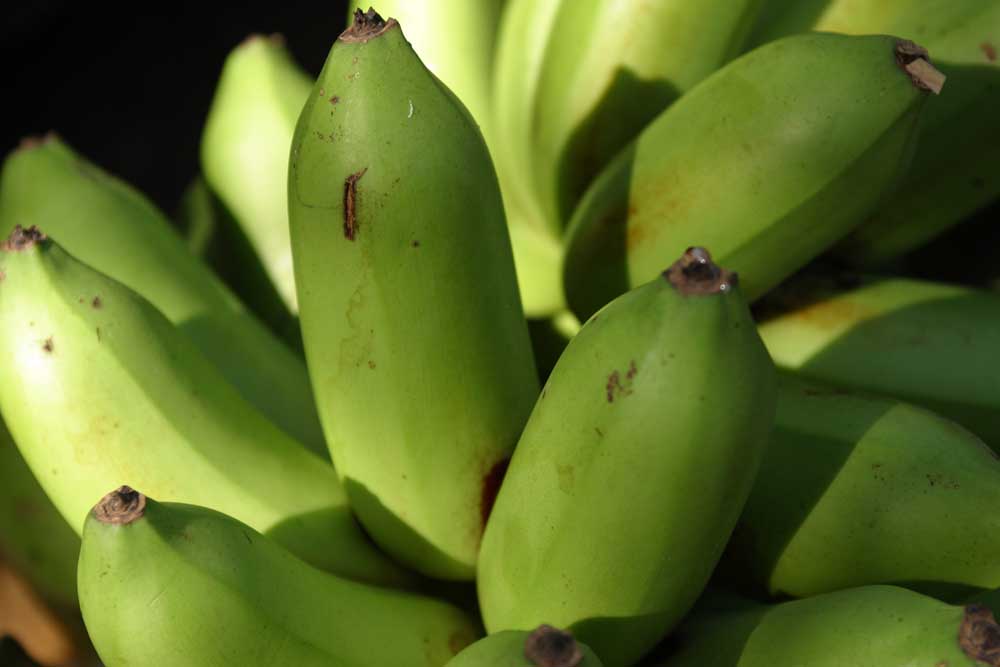Don’t resist this nutritional powerhouse
Published 12:00 am Wednesday, January 20, 2016

- ThinkstockBelieve it or not, green bananas are an excellent source of resistant starches, which are not digested in the stomach or small intestine and help support healthy gut bacteria.
Recently, more and more people are eating “gluten-free,” including myself. Many are adopting this lifestyle because it makes them feel better, because they are dieting or because they have been diagnosed with celiac disease.
Trending
Eating gluten-free doesn’t mean starches need to be banned from your dietary repertoire. New research is turning the nutrition and health community onto something called resistant starches.
Lay folk often think gluten and starch are the same. Starch, once metabolized, turns into sugar, thus increasing our desire to eat again, causing weight gain and predisposing some to metabolic syndrome and Type 2 diabetes.
Researchers have isolated a superfood for your gut in resistant starches. Resistant starches are not digested in the stomach or small intestine but pass through to the large intestine intact, thus the name; the starches are resistant to digestion.
Trending
There are four types of resistant starches. Type 1 resistant starches are physically unavailable to digestion because they are bound to the cell wall of the plant they comes from — seeds, legumes and grains.
Type 2 resistant starches have a high amylase content and are found in foods such as potatoes, green (unripe) bananas and plantains and are indigestible in their raw state.
Type 3 resistant starches forms after Types 1 and 2 are cooked and cooled. This includes cooked and cooled parboiled rice, potatoes and legumes. And Type 4 resistant starches are a synthetic form called “hi-maize RS.”
Resistant starches are beneficial to us and the gut. The flora (good bugs) in our gut are called microbiome. The body contains trillions of microbiome, weighing between 3 and 5 pounds! It is important to nourish and support the microbiome, as they impact the health of the body and the brain.
The good bacteria are called probiotics, and their preferred meal is prebiotics. Resistant starches are a type of prebiotic. Once the probiotics digest the resistant starches, an important fatty acid called butyrate is produced.
Butyrate is the preferred fuel source for the cells lining the colon, and it has positive roles in metabolism, inflammation and cardiovascular disease. It is also associated with a decreased risk of colon cancer by promoting increased blood flow to the intestine and has been used as a treatment for colitis.
Other promising effects of the increase in butyrate is decreased food intake by making you feel full and controlling the body’s blood-sugar response, not only in the current meal but the next meal as well.
Nutritionists recommend 15-30 grams of resistant starches a day. But add and increase the intake slowly, by one-quarter teaspoon a day, to prevent gas and bloating and give the bacteria time to adjust.
Other than the cook-and-cool method as described above, you can get resistant starches in flour form (look for Bob’s Red Mill). Mix it with water or nut milk or add to juice or smoothies. The best concentration of resistant starches is in potato starch, at 8 grams in a tablespoon.
Other forms of resistant starch include green banana flour, plantain flour and cassava/tapioca flour.
As always with my nutritional information, if you have concerns or certain medical conditions, discuss changes in your diet with your medical practitioner.
The scientific community is making crazy interesting discoveries about how what we eat affects our health, and making small adjustments can improve health from the inside out.
— Robin Gaudette is the Aquatics Wellness Coordinator at the Redmond Area Park and Recreation District. Contact her at robin.gaudette@raprd.org








